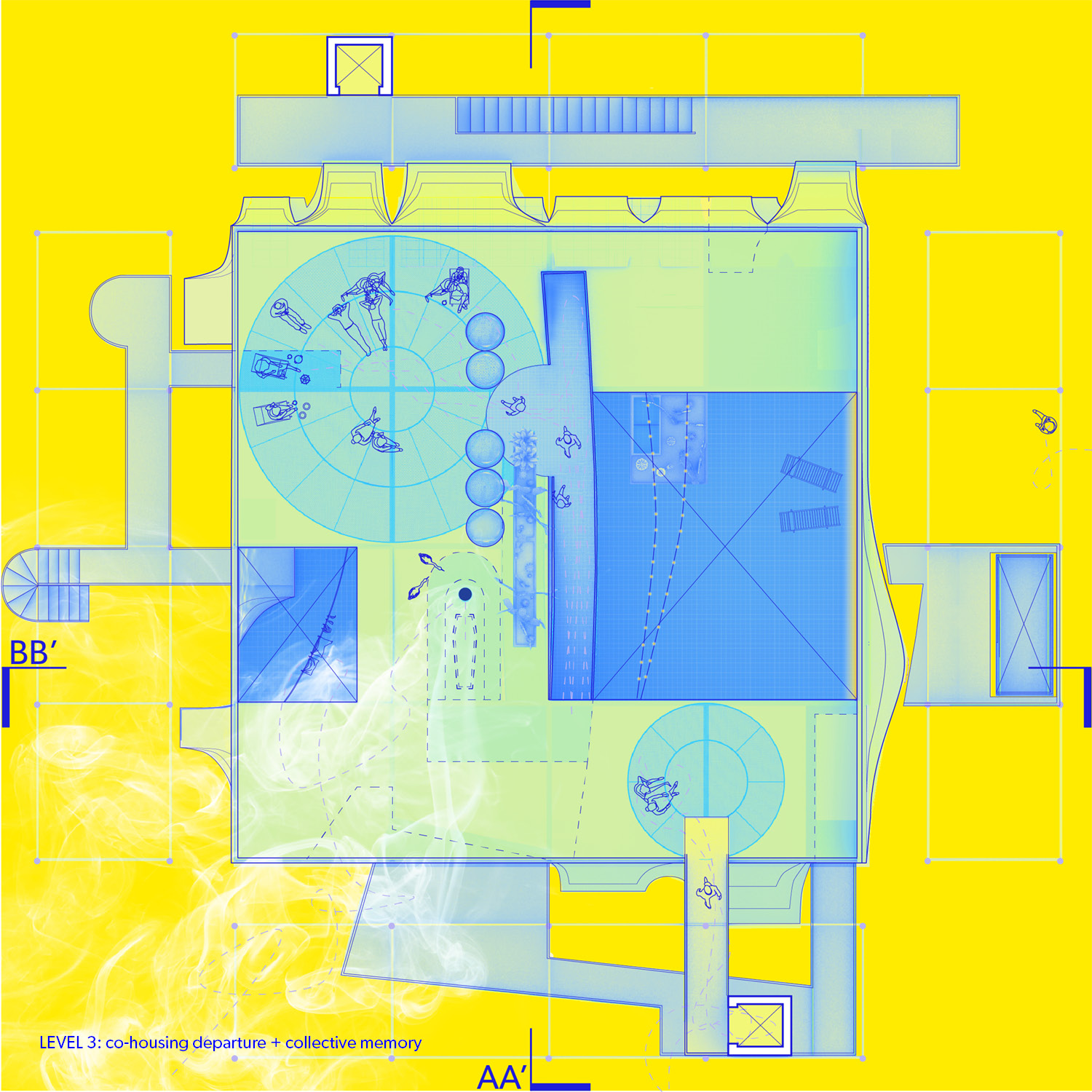About the Awards
For a student graduating from a professional degree program in each accredited University School of Architecture in Canada who has achieved the highest level of academic excellence and/or has completed the outstanding final design project/thesis.
AND
For those students who have achieved high academic standing in the top 10% of their graduating class.
MASTER OF ARCHITECTURE
Maya Orzechowska—RAIC Student Medal & RAIC Honour Roll
Maya Orzechowska—RAIC Student Medal & RAIC Honour Roll
ON BOUNDARIES + APERTURES:
drawing a vulnerable + intimate architecture
The boundaries and apertures of home are not separate from but play an active role in a politics of body and social body health. As both the idea of home and housing fail increasing numbers of people, this thesis seeks alternatives to home’s narrative of utopic internal intimacy that endorses retreat and a relationship of non-responsibility vis à vis the public realm. It suggests the result is dystopic in its concealment and exacerbation of vulnerability and its resistance to change. Instead, a vulnerable and intimate architecture centers the vulnerable body to uncover unique, pluralistic, personal intimacies.
To draw out the uncanny, repressed and emotional in home, Five Principles and corresponding drawings of unhomes are proposed. The Principles are based on Corbusier’s calibration of the subject and values of modern architecture almost a hundred years ago, in the aftermath of the 1918 Spanish flu and in a time where Tuberculosis was a leading cause of death. During Modernism, concern about fitness, evading disease and the aesthetics of diagnostic technologies such as the x-ray revolutionized the architecture of home. Today, drawing in the midst of the 2019 Coronavirus pandemic and the environmental crisis, at a time of heightened visibility of social and economic polarizations and of increasing tendencies towards solitary inhabitation, it seems time to reevaluate the physical and psychological effects of architecture’s boundaries on health in a more wholistic manner.
Architecture’s inside and outside, traditionally structured according to a narrative of binarization (nuclear internal intimacy and vulnerability to the external environment and external people or groups of people) are re-examined. The intent is to speculate a new healthy home (as a universal right) based on new understandings and boundaries of self in relation one’s neighbours and context, in the broadest sense. This new home relishes in the pleasure of mediating the tensions of vulnerability and intimacy, health and social health (in its multiple readings) through apertures and boundaries that reflect its inhabitants. This home is urban and personal in its conscious relationalities, and its temporally selective connection and isolation, regardless of its distance.
drawing a vulnerable + intimate architecture
The boundaries and apertures of home are not separate from but play an active role in a politics of body and social body health. As both the idea of home and housing fail increasing numbers of people, this thesis seeks alternatives to home’s narrative of utopic internal intimacy that endorses retreat and a relationship of non-responsibility vis à vis the public realm. It suggests the result is dystopic in its concealment and exacerbation of vulnerability and its resistance to change. Instead, a vulnerable and intimate architecture centers the vulnerable body to uncover unique, pluralistic, personal intimacies.
To draw out the uncanny, repressed and emotional in home, Five Principles and corresponding drawings of unhomes are proposed. The Principles are based on Corbusier’s calibration of the subject and values of modern architecture almost a hundred years ago, in the aftermath of the 1918 Spanish flu and in a time where Tuberculosis was a leading cause of death. During Modernism, concern about fitness, evading disease and the aesthetics of diagnostic technologies such as the x-ray revolutionized the architecture of home. Today, drawing in the midst of the 2019 Coronavirus pandemic and the environmental crisis, at a time of heightened visibility of social and economic polarizations and of increasing tendencies towards solitary inhabitation, it seems time to reevaluate the physical and psychological effects of architecture’s boundaries on health in a more wholistic manner.
Architecture’s inside and outside, traditionally structured according to a narrative of binarization (nuclear internal intimacy and vulnerability to the external environment and external people or groups of people) are re-examined. The intent is to speculate a new healthy home (as a universal right) based on new understandings and boundaries of self in relation one’s neighbours and context, in the broadest sense. This new home relishes in the pleasure of mediating the tensions of vulnerability and intimacy, health and social health (in its multiple readings) through apertures and boundaries that reflect its inhabitants. This home is urban and personal in its conscious relationalities, and its temporally selective connection and isolation, regardless of its distance.










“Contrary to what one might imagine, our health will not come from a border or separation, but only from a new understanding of community with all living creatures, a new sharing with other beings on the planet. We need a parliament not defined in terms of the politics of identity or nationality: a parliament of (vulnerable) bodies living on planet Earth.” -Paul B. Preciado, 2020.
Citation reference:
Preciado, P.B. (May/June 2020). Learning from the Virus. (Stevens, M. Trans.). Artforum. Retrieved July 30, 2020, from: https://www.artforum.com/print/202005/paul-b-preciado-82823